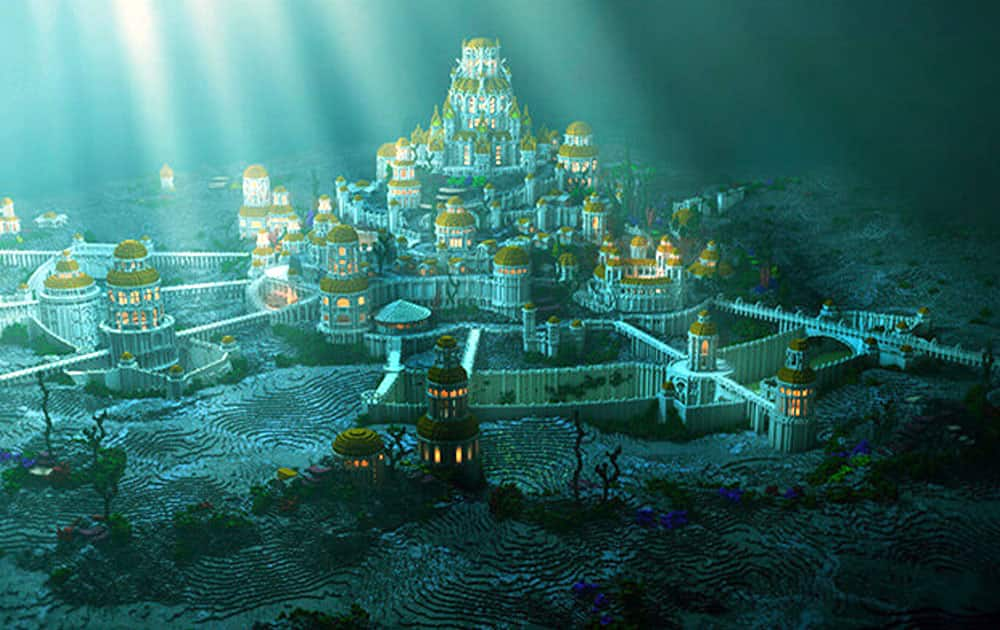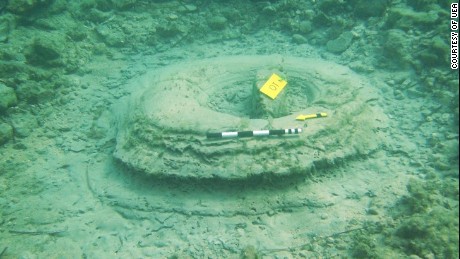Thus would begin the strange tale of a purported ancient underwater city lying under the waters of Cuba, which has drawn to it all manner of debate and discussion. At the time the crew were utilizing sonar in about 2,000 feet of water when they began getting startling images that. Atlantis, the lost empire, and the submerged city off the coast of Cuba, a myth or reality? Well over a decade, a team of underwater explorers from a Canadian exploration company was mapping the ocean floor and near the western coast of Cuba.
Shown within Cuba | |
| Region | Pinar del Río Province |
|---|---|
| Coordinates | 21°46′21″N84°50′12″W / 21.772547°N 84.836736°WCoordinates: 21°46′21″N84°50′12″W / 21.772547°N 84.836736°W |
| History | |
| Cultures | Unknown |
| Site notes | |
| Condition | Hypothetical ruins |
| Public access | Yes |
The Cuban underwater formation refers to a site thought by some to be a submerged granite structural complex off the coast of the Guanahacabibes Peninsula in the Pinar del Río Province of Cuba.[1][2][3]
- The Cuban Underwater City is another underwater structure that raises more questions than it answers. What appears to be ruins of a submerged city with corridors and buildings including massive granite complexes, pyramids and circular structures is located off the coast of western Cuba as much as 2,000 feet (650 meters) below the sea level.
- Pyramids Discovered Under Water Off Coast of Cuba, Might be Atlantis The remains of what may be a 6000-year-old city immersed in deep waters off the west coast of Cuba was discovered by a team of Canadian and Cuban researchers. Sunken City in Cuba.
- Bathymetric equipment is the underwater equivalent to hypsometry or topography. The discovery was even aired on TV. “The pyramid is located at around 40 meters beneath the surface between Sao Miguel and Terceira Islands,” a reported explains in a video that’s been uploaded to YouTube.
Overview[edit]
Sonar images interpreted as being symmetrical and geometric stone structures resembling an urban complex were first recorded in early 2001 covering an area of 2 square kilometres (200 ha)[citation needed] at depths of between 600 metres (2,000 ft) and 750 metres (2,460 ft).[1] The discovery was reported by Pauline Zalitzki, a marine engineer, and her husband Paul Weinzweig, owners of a Canadian company called Advanced Digital Communications,[4] working on an exploration and survey mission in conjunction with the Cuban government. The team returned to the site a second time with an underwater remotely operated vehicle that filmed sonar images interpreted as various pyramids and circular structures made out of massive, smooth blocks of stone that resembled hewn granite. Zalitzki said 'It's a really wonderful structure which really looks like it could have been a large urban centre. However, it would be totally irresponsible to say what it was before we have evidence.'[1]
After studying the images, National Geographic senior editor John Echave said: 'They are interesting anomalies, but that's as much as anyone can say right now, but I'm no expert on sonar and until we are able to actually go down there and see, it will be difficult to characterize them.'[5] Professor of oceanography Robert Ballard was quoted as saying: 'That's too deep. I'd be surprised if it was human. You have to ask yourself: how did it get there? I've looked at a lot of sonar images in my life, and it can be sort of like looking at an ink blot -- people can sometimes see what they want to see. I'll just wait for a bit more data.'[5]
Marine geologist Manuel Iturralde called for more samples before drawing conclusions about the site, saying the results so far were very unusual. He estimated that it would have taken 50,000 years for such structures to have sunken to the depth at which they were said to be found and stated that none of the known cultures living that long ago had the ability to build such structures. A specialist in underwater archaeology at Florida State University added: 'It would be cool if they were right, but it would be real advanced for anything we would see in the New World for that time frame. The structures are out of time and out of place.'[4]




See also[edit]

References[edit]
- ^ abc'Lost city' found beneath Cuban waters, BBC News, 7 December 2001.
- ^'Looking for lost riches in Cuba's seas: Underwater surveyors say they may have found sunken city', Reuters, Havana, 14 May 2001.
- ^Handwerk, Brian (May 28, 2002). 'New Underwater Finds Raise Questions About Flood Myths'. National Geographic News. Archived from the original on July 13, 2014. Retrieved 6 August 2019.
- ^ abBauza, Vanessa (Oct 27, 2002). 'Submerged Cuban Ruins May Be Manmade, Experts Say'. Daily News, Bowling Green, Kentucky. Retrieved 3 October 2012.
- ^ abBallingrud, David (November 17, 2002). 'Underwater world: Man's doing or nature's?'. St. Petersburg Times. Archived from the original on May 16, 2008. Retrieved 3 October 2012.
Underwater Pyramids Of Cuba
Underwater Pyramids Off Cuba
French Team Says Satellite Images Reveal Underwater City by Gary Vey for viewzone Without revealing the location, a team of explorers and researchers announced on December 15th, 2009, that they had discovered an underwater city in the Caribbean -- and backed up their claim with some amazing satellite photographs. This is a deja-vu of the alleged discovery of 'Atlantis' that was made back in 2001 by a Canadian based team that claimed to have found an underwater city off the Western tip of Cuba. The leader of that expedition claimed the site was in very deep waters -- more than 2000 feet -- and produced photographs collected through sonar scans and videotapes of the site taken from an unmanned vehicle which showed symmetrically arranged formations. Their white colour suggests they are made from cut, granite-like stone rather than naturally formed limestone, which is grey or black when oxidized. Like the announcement made today, the evidence was photographic in nature and was widely reported around the globe. Most news sources simply copied reports from other sources and no one bothered to dig deeper to learn who was making the claims and to determine if anyone had replicated their claims. The present announcement has the same circumstances -- even more suspicious since no names were mentioned. You would expect that anyone would be happy to have their names connected with such a wonderful discovery. This seems very odd. And, yes, there is money involved. The megalithic formations from the 2001 claim [above] -- called Mega for short -- occupied an area of about 20 square kilometres and it was suggested that they might be the remains from a series of rooms connected by large corridors. Paulina Zelitsky, the exploration team's project director, wondered whether they were part of a temple-like building used for astronomical purposes about 8,000 years ago. Zelitsky was also the president of the Advanced Digital Communications, a company that was supposed to be joint partners with the Cuban government to salvage archeological treasures from the waters off the Caribbean island. She was apparently more skilled at running a scam to lure investors to retrieve artifacts from the site than in doing any real archaeology. Following the initial announcement and the widely publicized, grainy photographs of rectangular shapes the whole discovery seemed to have been completely shut down. The last mention of Zelitsky was her arrest for financial irregularities in Mexico, where it is believed she was extradited to Toronto. The New Discovery This new site was found using advanced satellite imagery, and is not in any way associated with the alleged site found by Zelitsky. According to the new team, 'To be seen on satellite, our site is much shallower.' But, of course there is a financial angle to this team's announcement. The team is currently seeking money to mount an expedition to confirm and explore 'what appears to be a vast underwater city.' And... they need funding. From their press releases it appears that they may actually have discovered these lines and shapes entirely from the satellite images and not from the actual location (which they did not mention). 'You have to be careful working with satellite images in such a location. The digital matrix sometimes misinterprets its data, and shows ruins as solid masses. The thing is, we've found structure -- what appears to be a tall, narrow pyramid; large platform structures with small buildings on them; we've even found standing parallel post and beam construction in the rubble of what appears to be a fallen building. You can't have post and beam without human involvement.' -- The Team's principal investigator. Is this Atlantis? (Again) Careful not to fall into the trap of Zelitsky's expedition, and taking a realistic view of what they could have discovered, a spokesman for the team said, 'The romanticized ideal of Atlantis probably never existed, nor will anyone ever strap on a SCUBA tank, jump in the water, and find a city gateway that says, 'Welcome to Atlantis.' However, we do believe that this city may have been one of many cities of an advanced, seafaring, trade-based civilization, which may have been visited by their Eurocentric counterparts.' Fair enough. When questioned about the location, the team was careful to include the 'island' nation where this site is located in any future efforts to salvage artifacts or conduct any further exploration. This sounds a little like the concessions that the previous expedition, run by Zelitsky, had to make with Cuba. 'Whatever we've found does not belong to us. It belongs to the people of this island, and to the world at-large. If any pieces are brought to the surface, they belong in the hands of a museum.' -- the Project Leader The evidence At least these new photos have scope and detail in them. In fact, they're pretty amazing and suggest a metropolis. But pictures speak volumes, so... enjoy! When asked to speculate about how these structures apparently sank to the sea floor, the team spokesman only said, 'We have several theories.'Comments: |
